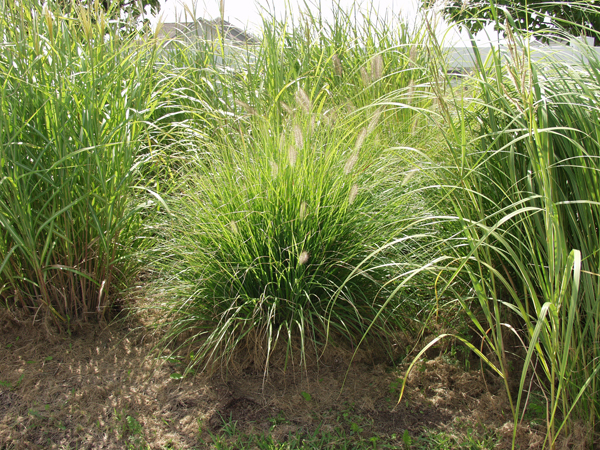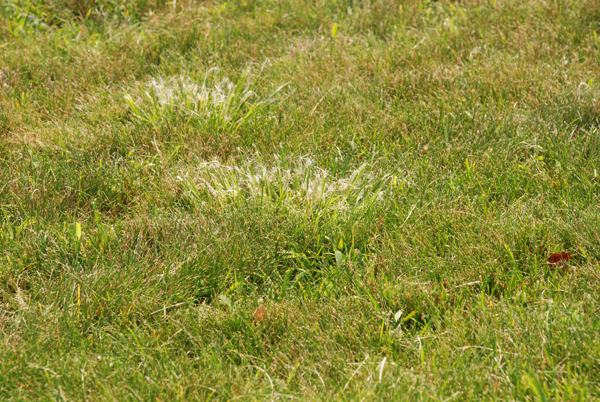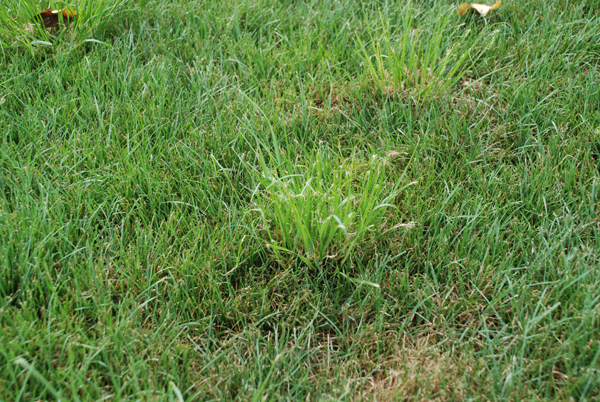|
Fountain grass and other ornamental grasses have added tremendously to landscapes of homes, commercial sites, and golf courses. However, we are now seeing some of these grasses escape from the ornamental beds into the turf. One in particular is fountain grass (Pennisetum spp) because it produces viable seeds which blow into surrounding turf and may germinate. We are unsure of the winter survival of fountain grass at lawn or rough height, but at least some of the clumps survive winters in central Indiana. Though most of the ornamental grasses cannot withstand lawn- or rough-height mowing, fountain grass can. Fountain grass has a tough blade which shreds when mowed, creating a whitish clump similar to the old Linn perennial ryegrass when mowed. It is starting to turn off color as a warm-season grass right now and becoming more obvious. We have completed two years of experiments at Purdue and University of Illinois and found quinclorac 75WDG (Drive, Quinclorac, QuinStar, etc.) at 0.367 oz/ gal spot-applied in two mid-summer applications two weeks apart to be most effective. Only apply enough water to just wet the plant. Applications now in late September likely will not be nearly as effective as they are entering dormancy. We also found glyphosate (Roundup and many others) wick-applied will work and that should still work in September as long as the fountaingrass is still green and growing. Additionally, digging individual plants would also work with only a few plants in the landscape. |
 |
Adult fountaingrass is very attractive in beds and widely used throughout Indiana. |
|
 |
 |
Escaped fountaingrass in a cool-season lawn or rough looks very similar to K31 tall fescue, lighter green and growing above the rest of the canopy |
Fountaingrass is easily recognizable after mowing as its leaves are tough and tend to shred, leaving white patches in the turf. |